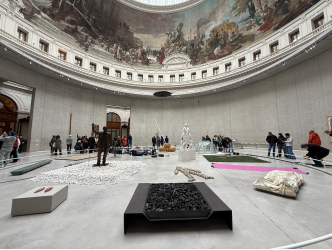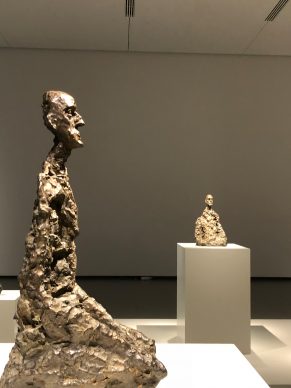Lightbulb moments
In the lives of artists there are major creative lightbulb moments, the fruit of their diligent research which, from one day to the next, opens up new horizons. In the contemporary period, the best-known example of this is the abstract painter Pierre Soulages (1919-2022) who used to tell the story of “outre-noir”, this shade of black with worked reflections, the idea for which appeared to him one night in 1979 after a long period of despondency.
Last Water Lilies
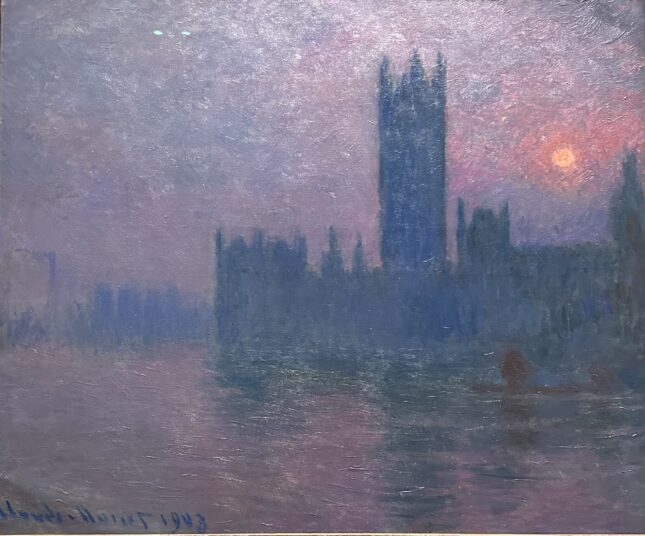
Claude Monet
Nearly a century earlier, the impressionist painter Claude Monet (1840-1926) also had his own pictorial lightbulb moment. He had settled in Giverny in 1883 in a property within which he had designed a garden crowned with a pond, which would provide him with so much inspiration. But he was assuredly not yet in his last Water Lilies period, the one that pushed him towards a dilution of forms, an undifferentiated mixture of water, sky and reflections of trees in compositions all in nuances of shades…(See here and here the last reports about Monet)
Close to abstraction
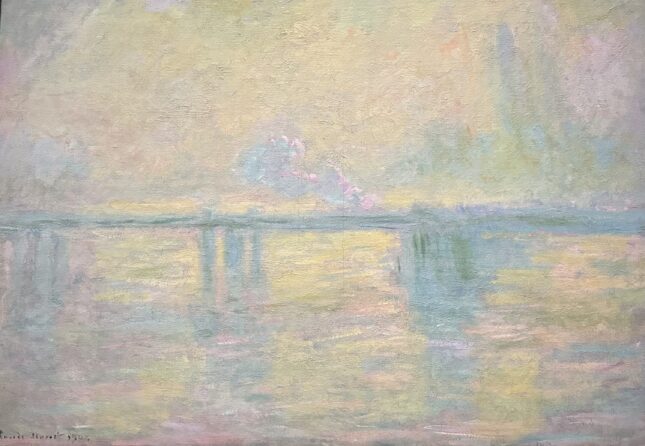
Claude Monet
He would soon arrive at a kind of covert form of abstraction. Unexpectedly, this change in style appeared to Monet not in Giverny, but in London. This is proven by the small but fabulous and very precise exhibition at the Courtauld Gallery in London until 19 January. It features 21 paintings depicting views of the Thames by Monet.
1904 exhibition

Claude Monet
This is a partial reconstruction of his Parisian exhibition of 1904, composed of 37 paintings then displayed by his dealer Paul Durand-Ruel. Monet carried out this exploration during these three long stays in London in 1899, 1900 and 1901. While it was family reasons that first brought him to the British capital, he returned because it was there that he found a unique phenomenon.
To appreciate is to support.
To support is to donate.
Support JB Reports by becoming a sustaining Patron with a recurring or a spontaneous donation.
Karen Serres
As Karen Serres, the curator of the exhibition, explains, “the factories were still located in the city centre. Colourful vapours emanated from them which, when mixed with the famous local fog, create a unique context.”
Amplifier for atmospheric effects

Claude Monet
For Monet, London was a kind of amplifier for atmospheric effects, as shown by the paintings on display. “Often the changes were so rapid that he finished his paintings several weeks later in his studio,” says Karen Serres. The painter, seized by enthusiasm, wrote to his wife Alice: “‘I can’t tell you what a fantastic day it was. What wonderful things, but none lasting more than five minutes, it is enough to drive one mad. No, there is no country more extraordinary for a painter.”
Exclusively in winter

Claude Monet
The artist had specific expectations. So he went to London exclusively in winter to observe the effects of the climate but he was not at all interested in painting snowfall over the city, for example. He first came to London in 1870 to escape the Franco-Prussian War. But the series which began in 1899 was spectacularly fruitful. It would result in around a hundred paintings, located only across three sites, Charing Cross Bridge, Waterloo Bridge and the Houses of Parliament.
Beauty of pollution
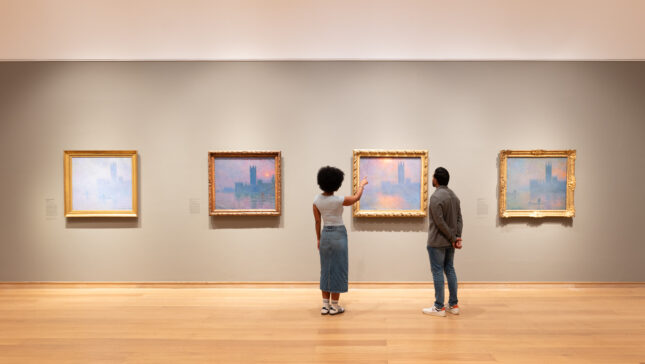
It is very clear that these buildings don’t matter to him. It was the surroundings that he wanted to capture. It is therefore industrial pollution mixed with the fumes from steamboats circulating on the river, merged with the famous “pea soup” of London smog, that gives rise to these extraordinary shades of pink, purple, canary yellow and sky blue… Unprecedented urban landscapes that would soon inspire the most beautiful and liberated of Monet’s water lilies.
https://courtauld.ac.uk/whats-on/exh-monet-and-london-views-of-the-thames/ Until 19 January.
Don’t forget, while visiting the Monet exhibition, to take a moment in the permanent collection to admire one of the most beautiful paintings ever created: A Bar at the Folies-Bergère by Édouard Manet.

Support independent news on art.
Your contribution : Make a monthly commitment to support JB Reports or a one off contribution as and when you feel like it. Choose the option that suits you best.
Need to cancel a recurring donation? Please go here.
The donation is considered to be a subscription for a fee set by the donor and for a duration also set by the donor.


